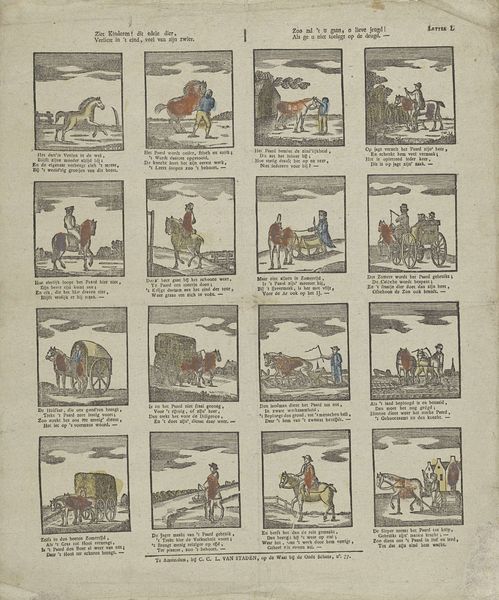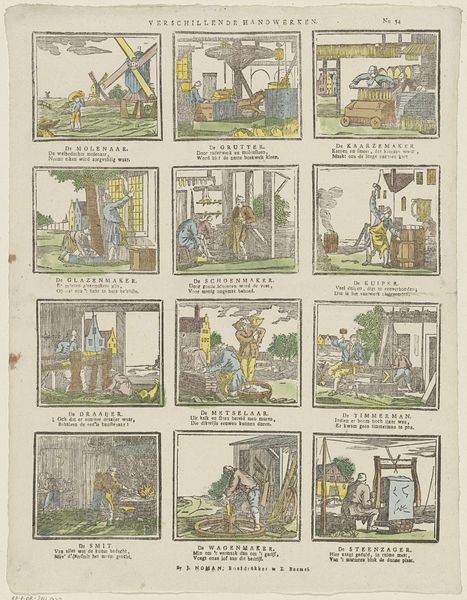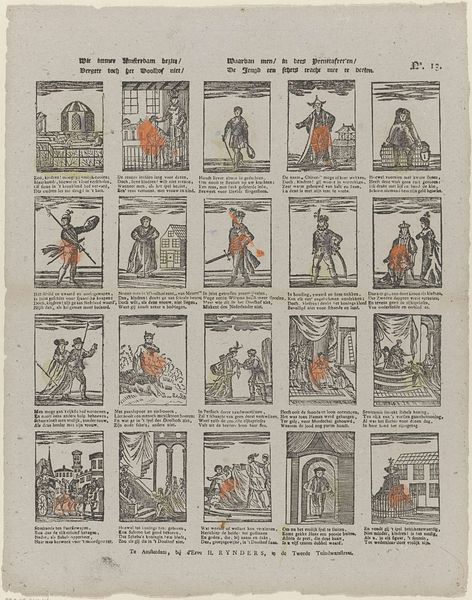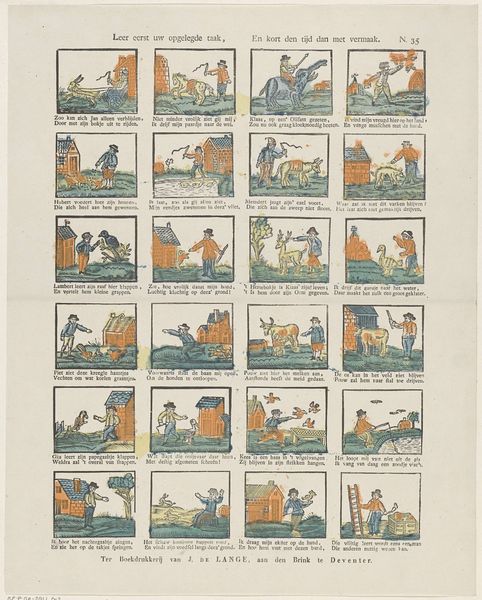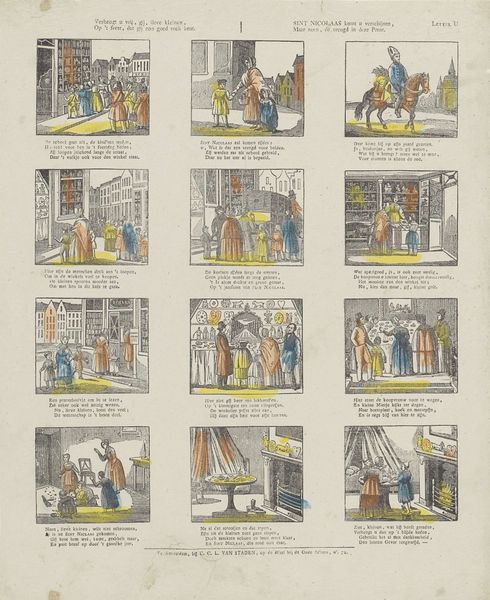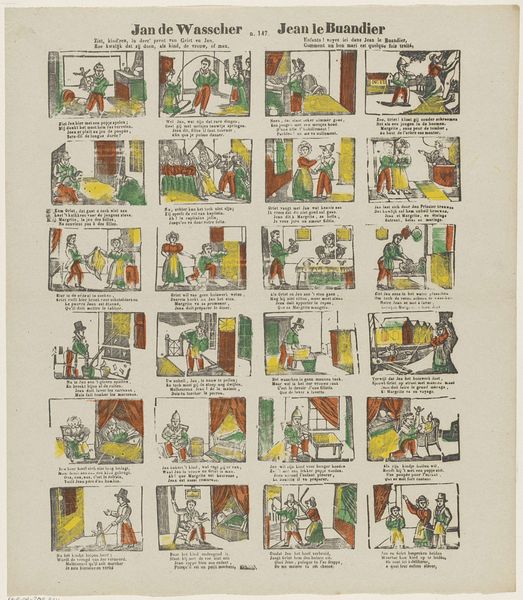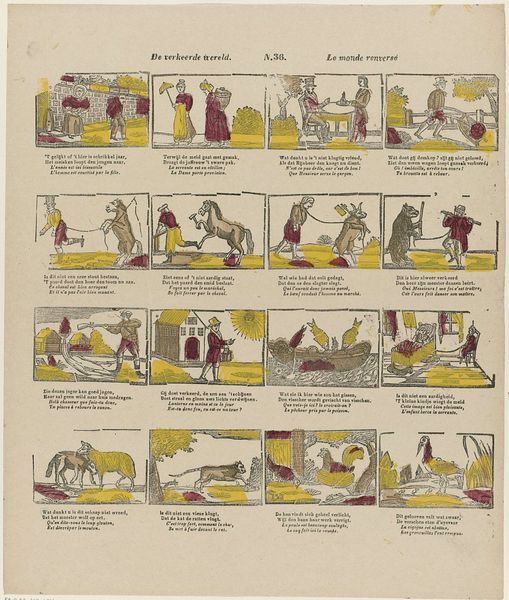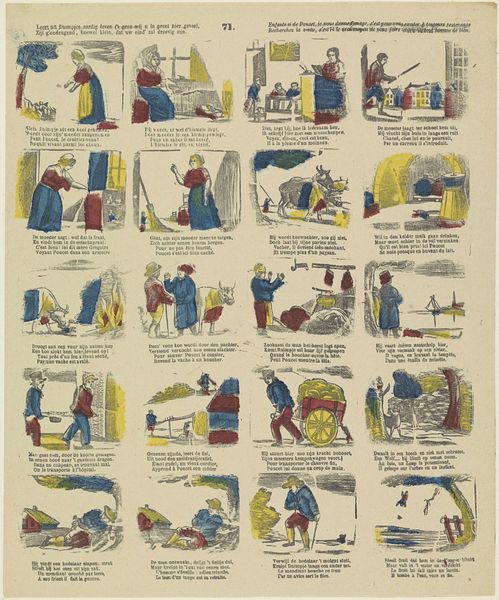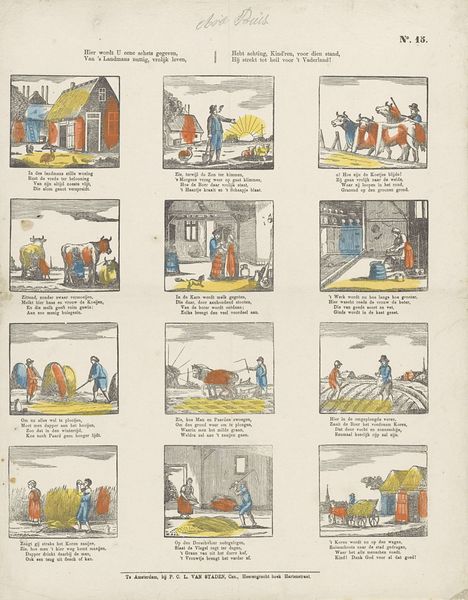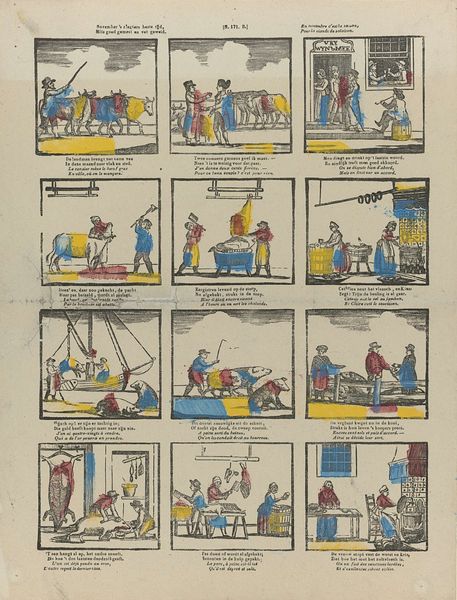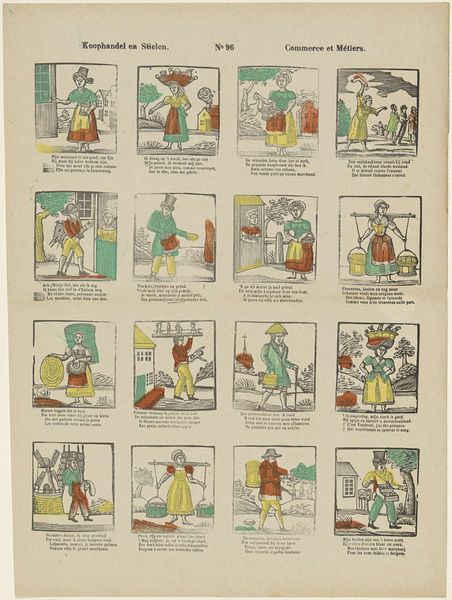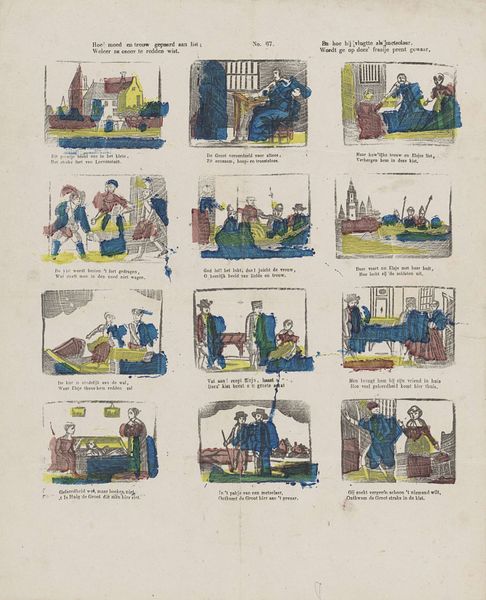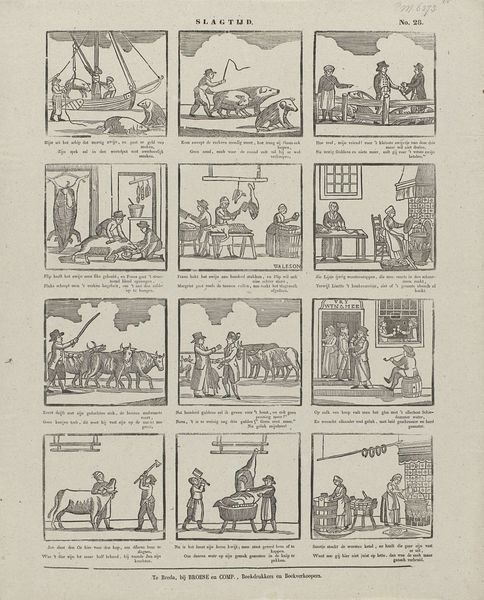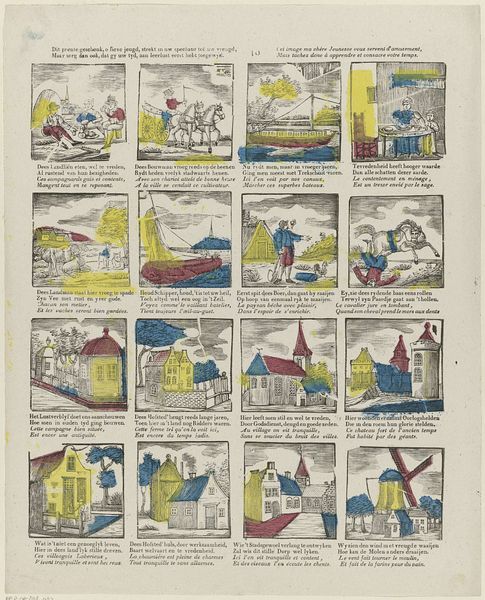
Dit prentgeschenk, o lieve jeugd! / Strekt in uw speeluur u tot vreugd. / Maar zorg dan ook, dat gij uw tijd, / Aan leerlust eerst heb toegewijd 1822 - 1870
0:00
0:00
print, engraving
#
dutch-golden-age
# print
#
landscape
#
cityscape
#
genre-painting
#
engraving
Dimensions: height 409 mm, width 336 mm
Copyright: Rijks Museum: Open Domain
Curator: What a charming piece! This engraving, made sometime between 1822 and 1870, is by Willem Bal. It's entitled "Dit prentgeschenk, o lieve jeugd! / Strekt in uw speeluur u tot vreugd. / Maar zorg dan ook, dat gij uw tijd, / Aan leerlust eerst heb toegewijd," which translates roughly to, "This print-gift, o dear youth! / May it bring joy in your play hour. / But also ensure that you your time, / Have first dedicated to the zeal of learning." It's part of the Rijksmuseum's collection. I find the grid of small scenes quite appealing. Editor: Immediately, the style makes me think of primers and didactic images for children. There's something very ordered about the little scenes, yet the hand-coloring gives them a touch of folk-art charm. Curator: Exactly! The imagery supports your reading of it as an educational gift. We see children playing, people working in fields, boats on the water – all interspersed with small townscapes. It’s a visual representation of Dutch society presented for children’s edification. Consider how each small scene celebrates different aspects of life, while reminding them of their own responsibilities. Editor: Yes, each little square could almost be a playing card symbol. What's particularly interesting is the integration of cityscape elements: we see windmills, churches, and simple Dutch houses. These symbolize progress, religious morality, and the warmth of hearth and home—essential visual cornerstones in defining Dutch identity. It reinforces communal identity at an early age, as well as the balance between play and learning emphasized in the title. Curator: I'm fascinated by the fact that these images were engraved. Each line tells a story not only of daily life, but of the technological process employed at the time. The act of engraving— a skilled labor and mode of mechanical reproduction— speaks to how societal progress during the Dutch Golden Age was intimately connected to artistry, craft, and the visual dissemination of social values. Editor: Precisely. And consider the visual weight these images carried, acting as mirrors reflecting idealized facets of Dutch life. Beyond instruction, such symbols embed pride in cultural heritage and identity. You can trace enduring national self-perceptions encoded and passed down to young minds throughout generations. Curator: I concur. It all underscores the public role of art in transmitting cultural values. Editor: It truly prompts reflection about art as an emotional inheritance, an artifact not only visually representing history but embodying it for future generations.
Comments
No comments
Be the first to comment and join the conversation on the ultimate creative platform.
